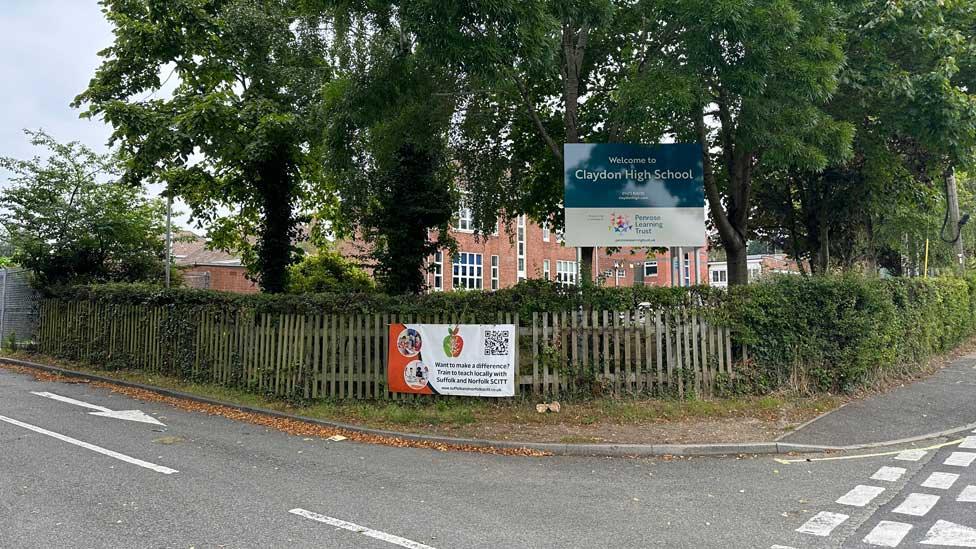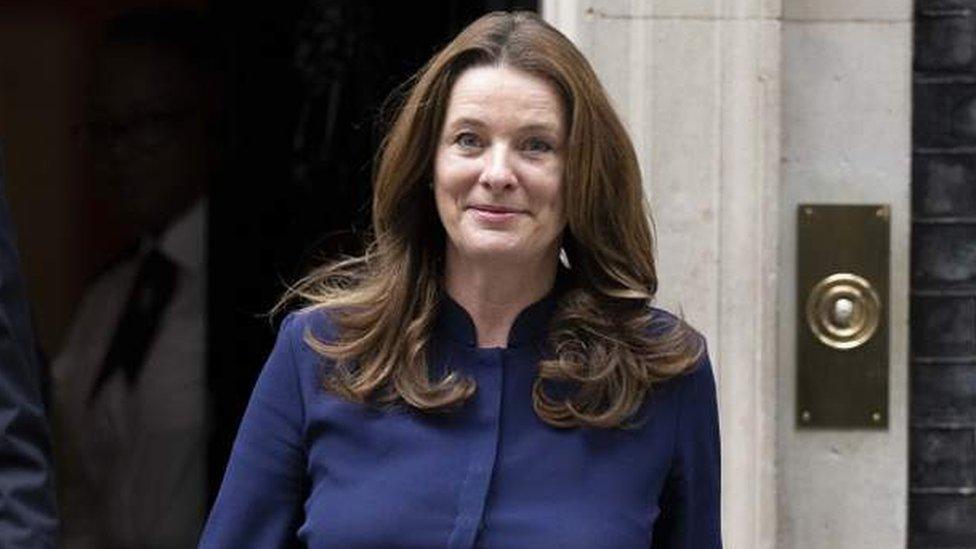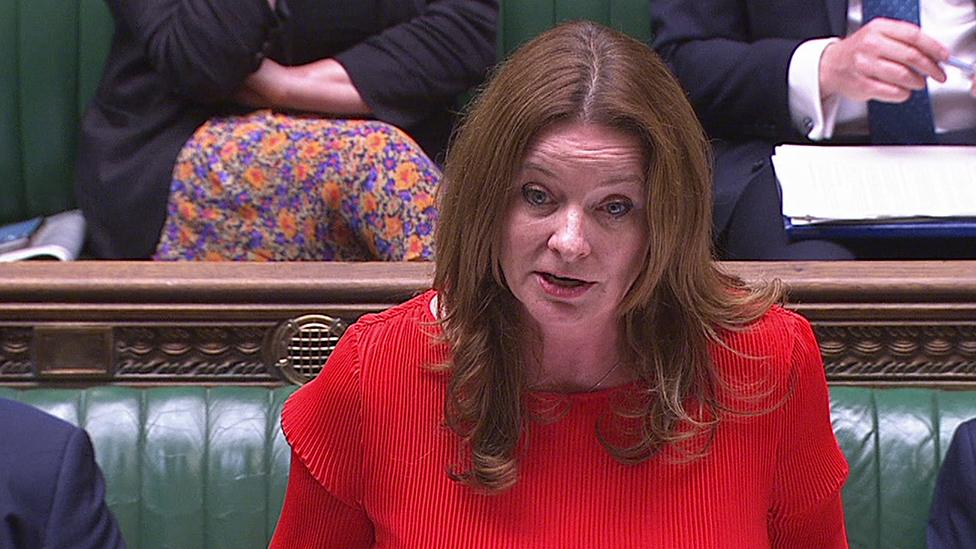Concrete crisis: Suffolk school closures 'incredibly challenging'
- Published

Sarah Skinner, chief executive of the Penrose Learning Trust, said it was "scrabbling to find temporary accommodation"
An education boss said the late notice it was given to close school areas had been "incredibly challenging".
Dozens of schools in England have been fully or partially closed at the start of the new academic year due to potentially unsafe RAAC concrete.
Three of eight schools managed by the Penrose Learning Trust in Suffolk were built using the material.
Its chief executive, Sarah Skinner, said it was "scrabbling to find temporary accommodation".
Reinforced autoclaved aerated concrete (RAAC) is a lightweight material that was used mostly in flat roofing, but also in floors and walls between the 1950s and 1990s.
On Thursday, the government told more than 100 schools in England to shut buildings using the concrete before term started.

East Bergholt High will see at least 10 classrooms out of action as the school opens for the new academic year
Ms Skinner said surveys of its schools had been undertaken in 2019 and it took immediate action where needed.
"The rest of our RAAC was deemed safe," she said, "so we had a longer term plan [for those].
"We had surveys done by the Department for Education (DfE) in July and they gave us some further updates on things we should be doing, but at that point all the RAAC in classrooms was deemed to be OK.
"Obviously some things have happened over summer and the 'safe' areas are now deemed unsafe.
"We're now kind of scrabbling to re-room, find temporary accommodation and manage the logistics at three of our high schools."

Claydon High School has 10 classrooms that have been shut, with another area "undetermined"
Her affected schools were East Bergholt High School, Hadleigh High School and Claydon High School, where between 10 and 16 classrooms had been closed in each.
In Claydon, 10 classrooms were shut with another area "undetermined".
"I have a surveyor coming out today," she said.
"[The area] that is undetermined would be a further ten classrooms, a dining hall, a kitchen, reception and office space, so if those spaces aren't given the all-clear then I will have much bigger logistical problems at this school."
She said she had been assured that all the capital costs would be paid for, such as temporary classrooms and subsequent remediation work, but wanted clarification that revenue costs, such as furniture, would also be met.
"Whatever the cause of the late notice, it's put huge pressure on schools," she said.
"It's frustrating and a shame that we're having to deal with this now rather than be excited and welcoming our students in for the new school year."

Farlingaye High School in Woodbridge is among those affected by the government's guidance
Peter Smith, head teacher of Farlingaye High School in Woodbridge, Suffolk, said about a third of his classrooms as well as toilets, changing rooms and office spaces had RAAC concrete.
Speaking to the Today programme on BBC Radio 4, Mr Smith said RAAC was identified during roofing work in May.
The school was not initially contacted over RAAC safety fears, he said. Instead, he wrote to the Department for Education last Thursday - and on Friday received confirmation those spaces were unsafe.
"This can't be another Covid scenario where school leaders found out about things at the same time as everyone else," he said.
"This is a crisis for schools. We need the reassurance that this is going to be all hands to the pump."

Niamh Sweeney, deputy general secretary of the National Education Union, said the government "made a choice not to invest in educational buildings"
The deputy general secretary of the National Education Union has warned disruption would last for some time, unless there was significant investment by the government.
Speaking to the BBC at Sunday's Burston rally in Norfolk, Niamh Sweeney said: "We want our children to be in buildings that are fit for purpose.
"The government made a choice not to invest in educational buildings."

Education Secretary Gillian Keegan said billions of pounds had been spent on school buildings since 2015
Education Secretary Gillian Keegan said £15bn had gone into capital spending for schools since 2015.
Speaking to the BBC, she confirmed temporary mitigation measures in schools would be funded by the DfE, but other things like transport of students to new locations would be considered on a case-by-case basis.
She added that the list of schools affected by unsafe RAAC would be published this week.

Follow East of England news on Facebook, external, Instagram, external and Twitter, external. Got a story? Email eastofenglandnews@bbc.co.uk, external or WhatsApp us on 0800 169 1830
Related topics
- Published4 September 2023

- Published2 September 2023
